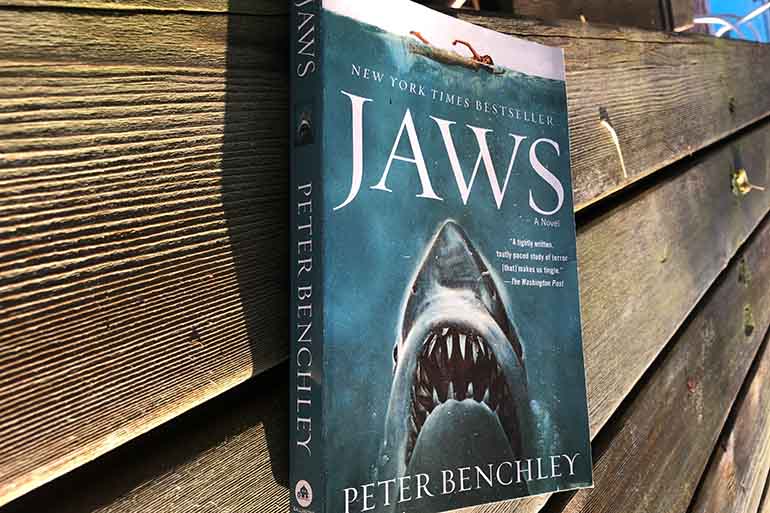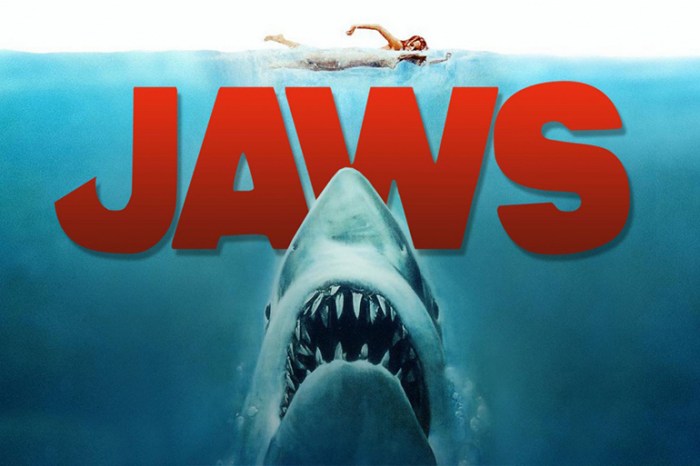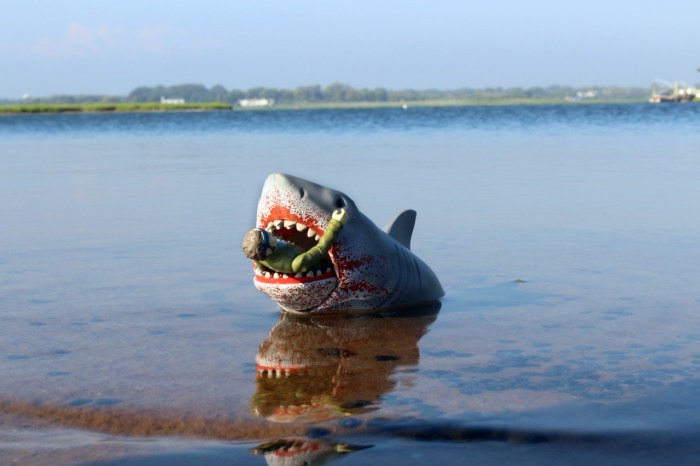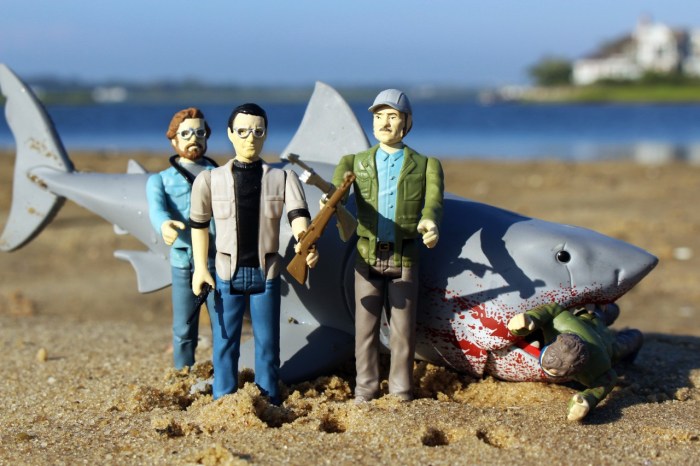50 Years Later, Jaws Still Belongs to the East End

“June the 20th, 1975… Anyway, we delivered the movie.”
Fifty years ago today, a fictional great white shark made all Americans think twice before running into the water on a hot summer day – and in doing so, sank its teeth into the history of the Hamptons. Though the film immortalized Jaws as belonging to New England, through the years, Dan’s Papers has reminded readers that the iconic story really belongs to Long Island – and specifically the East End.
Jaws was the highest grossing film of all time until Star Wars overtook it for that spot in 1977. It won three Academy Awards – Best Original Film Score, Best Film Editing, and Best Sound, and was also nominated for Best Picture, which it lost to One Flew Over the Cuckoo’s Nest.

Steven Spielberg’s iconic thriller, starring Richard Dreyfuss and the late Roy Scheider and Robert Shaw, was filmed on Martha’s Vineyard, and set on the fictional Amity Island somewhere off the coast of New England. But Jaws was born in the Hamptons. Peter Benchley’s novel, which inspired the film, was set in the fictional town of Amity — a thinly veiled version of a village located, as Benchley wrote, “halfway between East Hampton and Bridgehampton.” Readers familiar with the East End knew exactly where he meant: Sagaponack, perhaps, or the coastline near Amagansett’s Lazy Point, where in the book, the shark hunter Quint kept his boat.
Benchley, as Dan’s Papers founder Dan Rattiner recounted in 2020, had been obsessed with sharks since childhood and once carried a newspaper clipping of a monstrous 4,330-pound great white caught off Long Island. That fish was one of several caught by the late great Montauk fisherman Frank Mundus, the man widely believed to have inspired the character of Quint, who was portrayed by Shaw. Mundus’s boat, Cricket II, was featured in The Montauk Pioneer – one of the many ‘papers’ that would eventually become Dan’s Papers – in 1963, and Dan’s Papers covered his catches — including the massive 1964 shark that Benchley would later cite as a catalyst for Jaws. The fish’s head, donated by Mundus, still hangs at Salivar’s in Montauk, silently witnessing the decades of lore it helped spawn.
“Back home, we got a taxidermy man – he’s gonna have a heart attack when he sees what I brung him,” Quint says in the film.
Mundus died in 2008, and even though by all accounts he was not Jaws‘s biggest fan, his legacy still looms large among Long Island fishermen and Jaws fans.
But Jaws didn’t just brush against the East End. It debuted here. In a move that was part homage, part marketing genius, Universal Pictures chose the United Artists East Hampton Cinema for the film’s world premiere. As editor of Dan’s Papers, Rattiner stood across Main Street with his camera, capturing what would become the Hamptons’ first true red carpet event.
The aftermath was strange. In an infamous 1975 column in what was then known as The East Hampton Summer Sun – another eventual Dan’s paper – reprinted for the film’s 45th anniversary, Rattiner detailed his campaign to convince Universal to include a disclaimer clarifying that there were, in fact, no killer sharks prowling the Hamptons’ waters. His concern? That Jaws would tank the local economy, just as the fictional shark nearly did to Amity.
He got the runaround from Universal officials, who reassured him that the film’s setting was “deliberately vague.” Still, Dan’s ran a satirical front-page “letter” from the chief of police, explaining that locals fed the shark meat by helicopter on alternating days to ensure safe swimming — ocean one day, bay the next. Sunday? The shark sleeps.

That hoax was picked up by TIME magazine and The New York Times, propelling Dan’s Papers into national fame. But it also cemented Jaws — and its connections to the East End — into local lore.
The irony of it all? Despite filming elsewhere, Jaws brought a wave of Hollywood to the Hamptons. Spielberg moved into a Georgica compound in the ’80s. Roy Scheider bought a home in Sagaponack. Richard Dreyfuss joined the migration. Only Robert Shaw, who portrayed Quint, never followed — he died just a few years after the film’s release. As Rattiner observed, Jaws may have invented the modern blockbuster, but it also helped reinvent the Hamptons, turning sleepy beach towns into the high-gloss haven of the rich and famous.
Over the years, Dan’s Papers continued to celebrate Jaws. At the launch of the Hamptons International Film Festival, Rattiner wanted to use the iconic movie poster for a special issue — only to be told by Roy Scheider himself, “I’m giving you permission.” From anecdotes about pea-shooting food fights with Spielberg to inside stories about improvised scenes, Scheider shared stories over dinners in East Hampton.
And now, at 50, Jaws still looms large. It’s not just a movie about a shark. It’s a film that takes scene setting to the next level, and really tells the story of a location. Though that location is officially Martha’s Vineyard, with the sleepy oceanfront town setting that explodes into something nearly metropolitan when summer begins, the need for summer dollars, and the complicated but symbiotic relationship between the locals and the tourists, Jaws tells the annual story of the East End perfectly.
Farewell and adieu to ye fair Hamptons readers.










